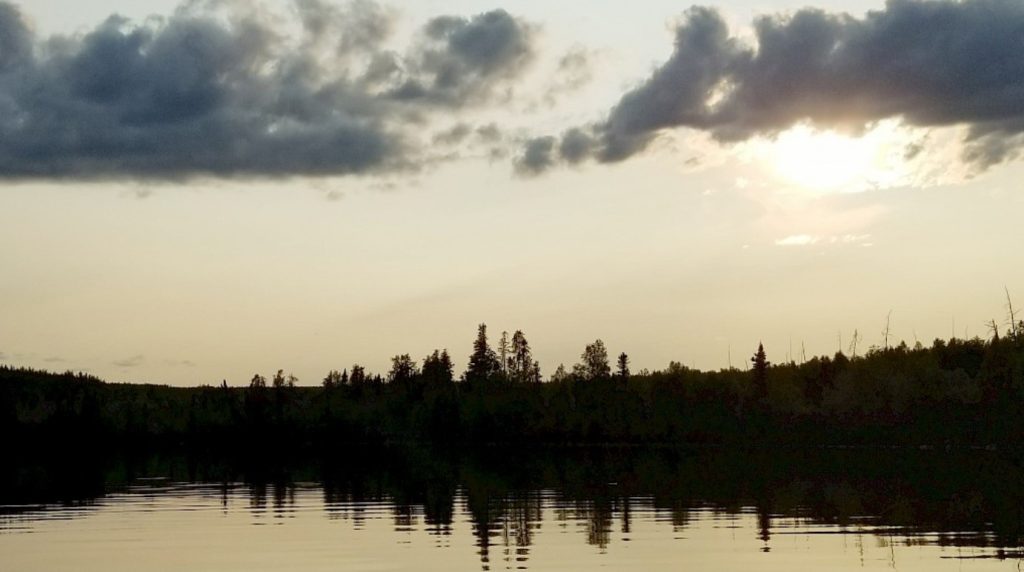Standard Uranium confirms uranium at Atlantic Project, Saskatchewan

Standard Uranium Ltd. [TSXV-STND; OTCQB-STTDD; FWB-9SU] provided a summary of analytical results from the inaugural winter 2024 drill program at its 3,061-hectare Atlantic Project highlighting uranium mineralization in multiple drill holes. Atlantic is situated in the prolific eastern Athabasca Basin, northern Saskatchewan.
The Project is currently under option to ATCO Mining Inc. [CSE-ATCM], an arms-length company. Under the option, ATCO can earn a 75% interest in Atlantic over three years. The optionee-funded winter 2024 drill program contributes to satisfying the first year of minimum exploration expenditures required by the option.
Highlights – Uranium Mineralization Confirmed: Analytical results from the winter 2024 drill program at the project confirmed highly anomalous uranium in drill holes ATL-24-002, ATL-24-004A, and ATL-24-005A, coinciding with prospective structural zones and favorable alteration including dravite-rich clays.
Sandstone & Basement-Hosted Uranium: Multiple zones of elevated uranium linked to the sub-Athabasca unconformity and basement structural zones were intersected, indicating a uranium-fertile system.
Uranium Pathfinders: Several key uranium pathfinder elements are present in anomalous quantities in multiple drill holes, providing vectoring information for future programs. Intersections of dravitic-clay associated with structural zones has been confirmed in drill holes ATL-24-002, ATL-24-004A, and ATL-24-005A.
Verified Targets: Massive structural disruption confirmed in the sandstone column and multiple wide (>10 metres) brittle-reactivated graphitic shear zones confirm the main interpreted electromagnetic (EM) corridor on the western claim block which was not reached by previous operators. The inaugural program results have confirmed the company’s exploration thesis on the project, highlighting a uranium-fertile system with several kilometres of still untested strike length across the project.
Follow Up Targets & Next Steps: Atlantic holds significant upside for discovery along the untested portions of the E-W conductor system. Supplementary geophysical surveys over the central claim blocks are currently being planned and will provide further target areas for phase II and III drilling, along with the additional untested gravity low anomalies on the western block identified in 2022.
“Confirming uranium mineralization and dravite alteration in multiple holes from our inaugural drill program at Atlantic is a fantastic first result. In addition, highly anomalous pathfinder elements coupled with the presence of a significant structural framework on the property provides the ideal conditions for high-grade unconformity-related uranium mineralization to follow up on,” said Sean Hillacre, VP of Exploration. “The scale and intensity of deformation in the basement rocks paired with strong alteration in the sandstone is highly prospective and we are just beginning to reveal the compelling uranium story along this 18 km-long trend next door to one of the highest-grade uranium deposits in the world.”
The Atlantic Project covers 6.5 km of an 18 km long, east-west trending conductive exploration trend which hosts numerous uranium occurrences. The company completed a high-resolution ground gravity survey on the western claim block in 2022, revealing multiple subsurface density anomalies, potentially representing significant hydrothermal alteration zones in the sandstone rooted to basement conductors.
The Atlantic project boasts all the key characteristics to host a high-grade unconformity-related uranium deposit, and the results of the inaugural drill program on the project have strengthened the validity of the exploration thesis on the Project. Follow-up targets are being planned as geological data from the winter 2024 program continues to be processed and interpreted.
The winter 2024 drill program comprised 3,316 metres of diamond drilling across 5 drill holes. Inaugural drilling intersected the key characteristics of a uranium-bearing mineralized system in previously untested “Target Area A”, confirming the presence of a significant graphitic fault system in the basement rock linked to uranium mineralization and prospective hydrothermal alteration at the unconformity and in the basement rock.
The drill program was designed to follow up on highly anomalous uranium results returned from drill hole BL-16-32, in addition to testing the newly outlined gravity lows defined by the 2022 ground survey. On the western Atlantic claim block, drilling by Denison Mines in 2016 (Hole BL-16-32) identified 342 ppm uranium over 0.5 metres at the base of the sandstone, just north of Target Area A. Winter drilling was focused in Target Area A which is defined by a 1,400-metre x 850-metre density-low anomaly coinciding with stacked EM conductors and an interpreted regional fault.
Standard Uranium holds interest in over 209,867 acres (84,930 hectares) in the Athabasca Basin.
Standard Uranium has successfully completed four joint venture earn-in partnerships on their Sun Dog, Canary, Atlantic and Ascent projects totaling over $31M in work commitments over the next three years from 2024-2027.
Standard Uranium’s Davidson River Project, in the southwest part of the Athabasca Basin, Saskatchewan, comprises 10 mineral claims over 30,737 hectares. Davidson River is prospective for basement-hosted uranium deposits due to its location along trend from recent high-grade uranium discoveries.
Standard Uranium’s eight eastern Athabasca projects comprise 30 mineral claims over 32,838 hectares.
Standard Uranium’s Sun Dog project, in the northwest part of the Athabasca Basin, Saskatchewan, is comprised of nine mineral claims over 19,603 hectares.
